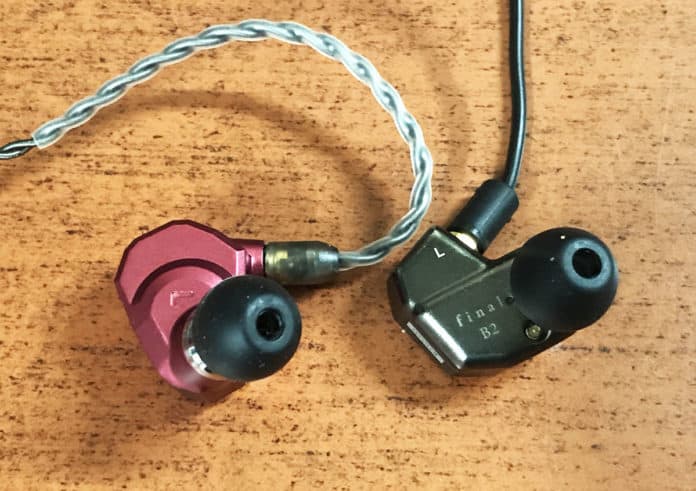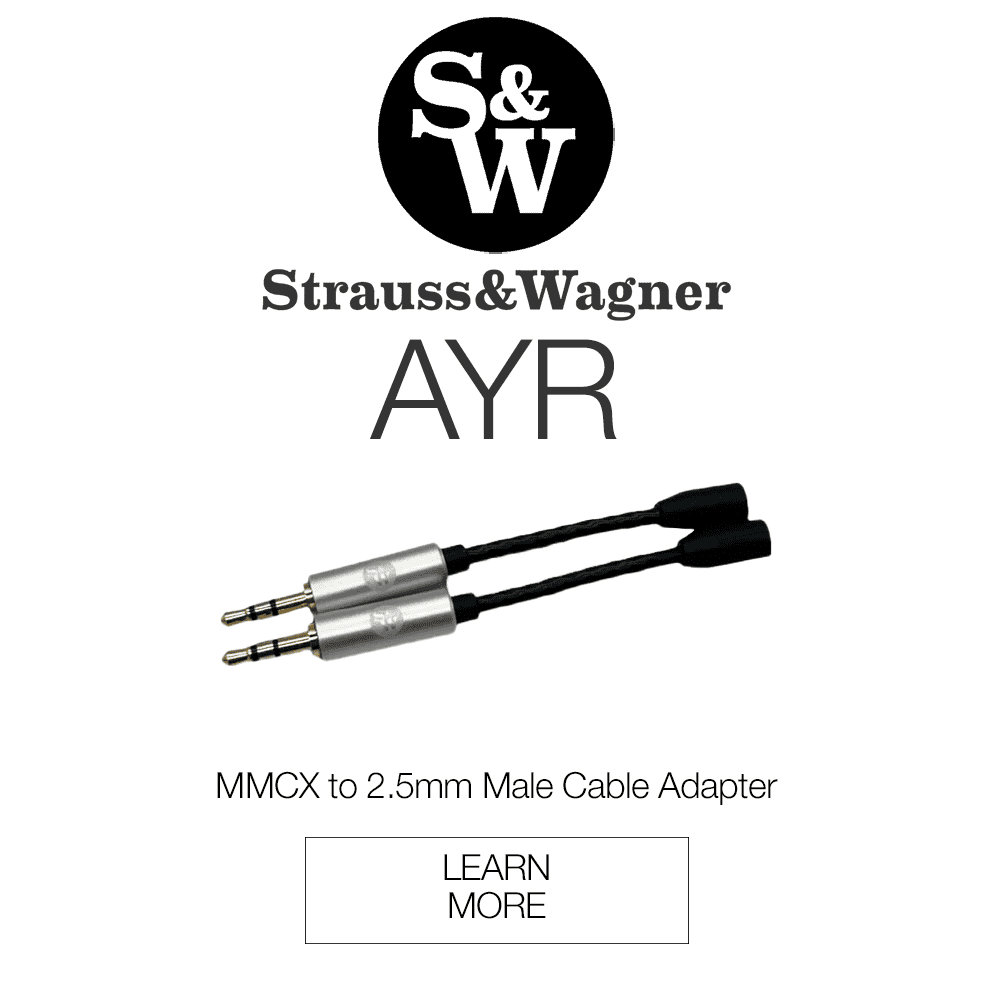With the release of the B-Series from Final Audio, it left me wondering how they compared to other major players in their price ranges. And at $299, I immediately remembered the Campfire Audio IO and wondered how it might sound against the Final Audio B2! So how do the two compare, and which one is right for you? Let’s take a closer look with this Final Audio B2 vs Campfire Audio IO.
Final Audio B2 vs Campfire Audio IO
In the Box
| Final Audio B2 | Campfire Audio IO |
| Final Audio B2 IEMs | Campfire Audio IO IEMs |
| Detachable MMCX cable with 3.5 mm connector | Detachable MMCX cable with 3.5 mm connector |
| Earhooks | Eartips (foam, Final Audio E-Type tips, and silicone tips) |
| Eartips (Final Audio E-Type tips) | Cleaning tool |
| Cable removing grip | Lapel pin |
| Silicone carrying case | Leather, zipping carrying case |
| Documentation | Documentation |
Design
Look and Feel
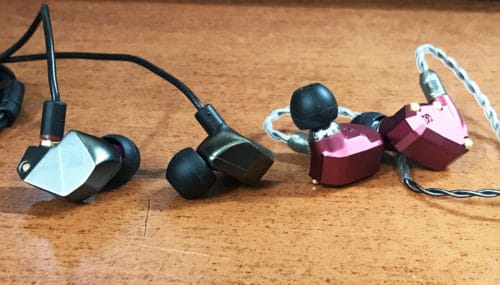
Both the Final Audio B2 and the Campfire Audio IO have attractive, unique, geometrical driver housing shapes. They both use a mixture of hard and soft edges to give them a classy look. However, the B2 has more of a classy, mature look, whereas the IO has a more masculine, mechanical look design. Additionally, both IEMs are made of aluminum and thus are about the same weight. Both feel strong and durable in my hands.
Comfort and Fit
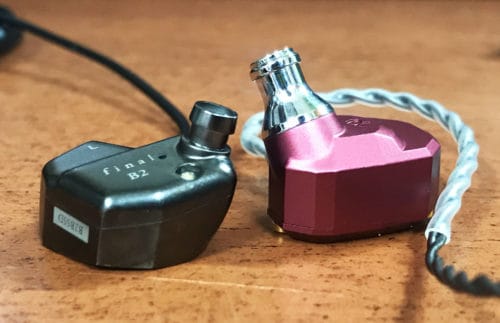
Both the Final Audio B2 and the Campfire Audio IO are Additionally, they are about the same size. However, the B2 has a shorter nozzle than the IO. As a result, the B2 fits more comfortably in the ear, but the IO is more sound isolating and goes deeper in the ear canal.
Cables

The cables of the Final Audio B2 and the Campfire Audio IO are both detachable MMCX cables which terminate in 3.5 mm connectors. While the B2’s cable has a smaller footprint, its individual conductors are in the same jacket. On the other hand, the IO’s cable has a litz style. Additionally, the B2’s cable removable earhooks, whereas the IO’s cable has built-in molded earhooks. Lastly, both IEMs’ 3.5 mm connector is ‘L’ shaped.
Drivers
Both the Final Audio B2 and the Campfire Audio IO utilize balanced armature drivers. The B2 has one driver, and the IO has two. It is worth noting that the B2 required a little bit more amplification than the IO.
Sound
Low Frequencies
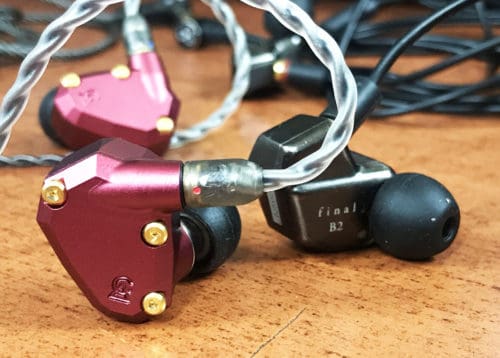
The low frequencies of the Final Audio B2 and the Campfire Audio IO actually have quite a similar low end. Both are modest in level, although have a feeling of quickness which helps retain some punch and groove. However, their low ends have slightly different shapes. On one hand, the B2 has a little emphasis around 60 Hz. As a result, it has a little bit of extra chest, which exists more as a feeling, than the IO. On the other hand, the IO has emphasis around what sounded like 100 Hz. As a result, the low end sounds slightly more thumpy than the B2. That said, the IO also seemed to have a little bit more low-frequency extension than the B2.
For example, when I was listening to the song I’m Callin’ by Tennis the kick drum had a feeling of movement with both the Final Audio B2 and the Campfire Audio IO. However, it was a little quieter in the mix with both of them than I personally prefer. The kick had a slightly more chesty and punchy feel with the B2 but it had more extension with the IO.
Middle Frequencies
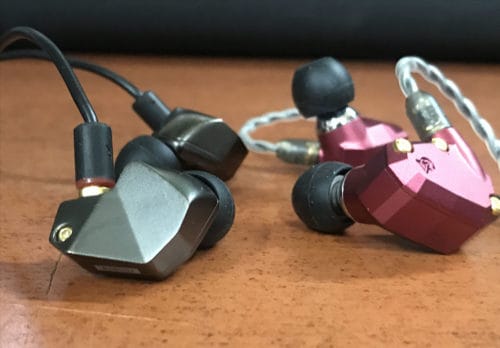
The middle frequencies of the Final Audio B2 and Campfire Audio IO are active and dynamic.These fun dynamic ranges give middle frequencies a feeling of spaciousness and separation. However, the shape of the midrange of the IEMs are very different from each other. On one hand, the B2 has a little bit of emphasis in the low-mids around what sounded like 150-200 Hz. The IO doesn’t have this emphasis, and thus bass guitars, cellos, synths, etc sound thicker and fuller with the B2. The high-mids of the IEMs have a little bit of a similarity with emphasis around 4 kHz. However, the 4 kHz boost of the B2 is wider, ranging throughout the entire high-mid region. On the other hand, the IO has a cut at the base of the high-mids, around 2 kHz. As a result, the B2 sounds a bit more present and realistic, whereas the IO sounds more spacious and leans more toward the top of that region.
For example, when I was listening to the song A Bigger Paper Bag by Father John Misty, the bass guitar had a stronger sense of attack with the Campfire IO, but felt fuller and more emotionally impactful with the Final Audio B2. Additionally, the lead vocal felt emphasized in the mix with both IEMs, but tonally it felt different in both. With the IO, it was a little bit louder in the mix and it leaned toward the nose and breath. By contrast, with the B2, it sounded a bit fuller with more chest and throat, and a little bit quieter in the mix.
High Frequencies

The high frequencies of the Final Audio B2 and the Campfire Audio IO are possibly the biggest difference between the two IEMs. On one hand, the B2 has emphasis in the lower treble around what sounded like 7 kHz. This gives it a sense of articulation and presence. However, in general, the rest of the highs are modest in level. There is a tiny boost at the base of the upper octave around what sounded like 10 kHz which provides a little bit of extra lift. On the other hand, the IO has a cut around 7 kHz, making it slightly less articulate than the B2. However, it has a boost from what sounded like 8 kHz on up, giving it a great sense of detail, emphasis, texture, and lift in the highs.
For example, when I was listening to the song I’ll Show You by Justin Bieber, his vocal sounded darker and had less lift with the Final Audio B2 than the Campfire Audio IO. On the other hand, his vocal with the IO sounded breathy and had a nice feeling of texture and extension. Additionally, the bright synths and cymbals sounded louder in the mix with the IO than the B2. By contrast, vocals, synths, and cymbals felt warmer with the B2. However, it had a little bit of extra articulation with the B2 than the IO.
Soundstage

The soundstage of the Final Audio B2 and the Campfire Audio IO is shaped a bit by their frequency responses. Due to the IO’s greater extension in both the highs and lows, and because of its emphasis on the highs, the feeling of height is more extensive and dramatic than that of the B2. Likewise, because of the thicker midrange of the B2, its room mics and reverbs come through clearer, so it shows off the depth a little bit more. That said, since the IO has nice spaciousness around its notes as well, it too, has a sense of nuance to its depth. Finally, the span of width of the IO feels more constant than the B2, whereas the B2 has more dramatic width embellishments.
For example, when I was listening to the song Miles Runs the Voodoo Down by Miles Davis, the cymbals, shaker, horns, and bass bass all had a greater sense of extension with the Campfire Audio IO than the Final Audio B2. However, the B2 revealed more of the room sound of those instruments, making them feel a little more accurately placed in the sense of depth. Lastly, the cymbals, keys, horns, and guitars all felt very widely placed with the IO. On the other hand, they felt more centered with the B2, but would widen out on embellished hits.
Overview
Overall, the Final Audio B2 and the Campfire Audio IO both are beautiful IEMs which fit well and are comfortable in the ears. Their sound signatures differ mostly in the high frequencies because the IO leans toward the highs and their extension, whereas the B2 leans more toward its high-mids. As a result, the IO is better for genres that want more high frequency detail like classical music, jazz, and bluegrass. By contrast, the B2 is better for instruments that need more fullness and crunch to their sound like rock, synthy electronic music, and indie music.
The Final Audio B2 and the Campfire Audio IO are available for the best price here:
MajorHiFi may receive commission through retail offers.
Compare the ranking of various headphones, earbuds and in-ear monitors using our tools.
Discuss this, and much more, over on our forum.
---MAJORHIFI may receive commissions from retail offers.


